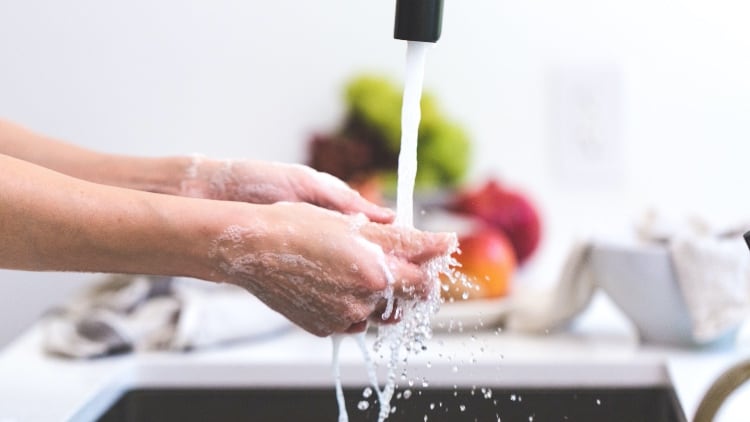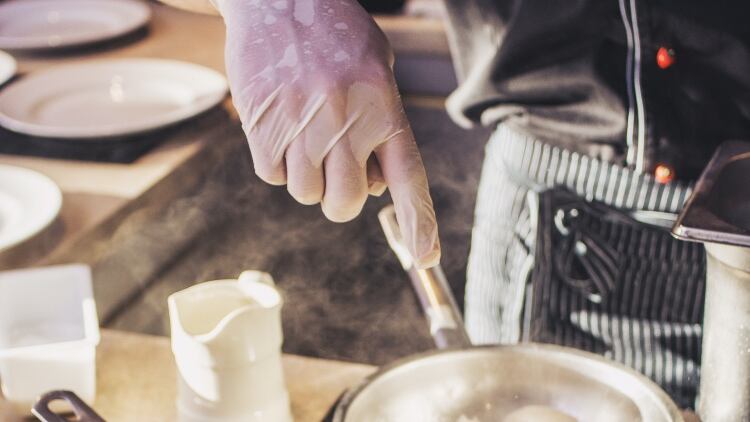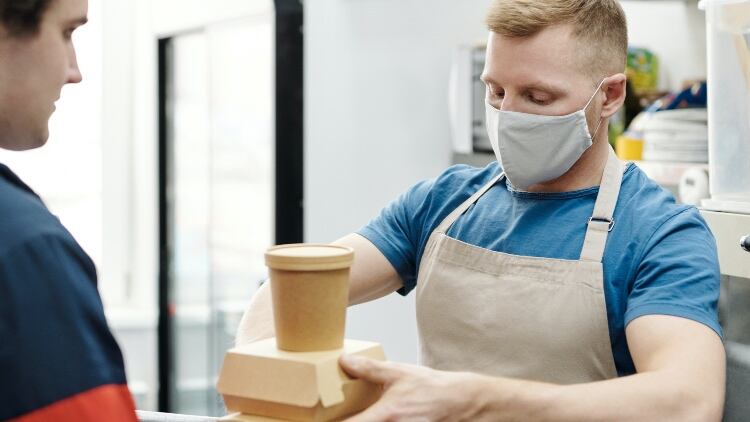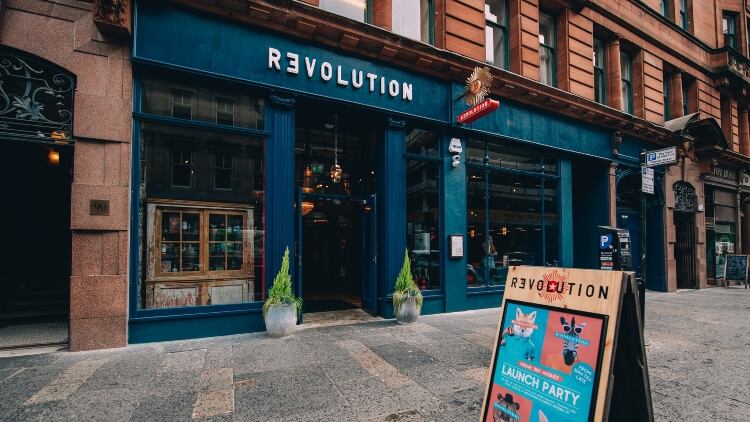You could forgive pub operators for feeling burnt by the Covid-19 outbreak. As a best-case scenario, those fortunate enough to open on 4 July will have been closed for a total of 106 days since Prime Minister Boris Johnson called last orders on 20 March.
According to the Government’s 50-page lockdown exit recipe, Our plan to rebuild: The UK Government’s Covid-19 recovery strategy, “higher-risk” businesses including hospitality venues such as pubs and bars will be required to meet sector-specific “Covid-19 secure guidelines” when they open their doors again this summer.
However, there are ongoing concerns across the pub sector that the Government’s plans to reopen hospitality businesses are undercooked.
As things stand, despite calls for Public Health England’s social distancing rules to be halved to one metre in line with World Health Organisation (WHO) guidance, this means pubs of all shapes and sizes will have to implement two-metre breathing space.
This could really turn up the heat on food-led businesses according to High Speed Training content author Sarah Taylor, who goes as far as to say that, in some instances, social distancing is “simply not possible”. She advises operators to cook up comprehensive risk assessments to stew over what alternative control measures may fit the bill.
“This could include waiting staff and chefs wearing PPE (personal protective equipment); hand sanitiser stations installed throughout the premises; rigorous cleaning schedules put in place; one-way flow systems implemented; and mandatory health checks for staff carried out,” she says.
Food Alert’s technical director Julia Wilson adds that such an assessment should revolve around employee safety first and foremost to make returning staff feel comfortable in the workplace.
“Teams will need to feel confident you have done everything possible to make work as safe a place as possible,” she explains. “Clear guidance, communication and training on new hygiene and operating procedures will all play a part in rebuilding their confidence, so they will be in the best place possible to deliver outstanding customer service.”
Social distancing can be difficult
How can pubs protect kitchen staff?
Alongside the Government’s Covid-19 recovery strategy, industry body UKHospitality has released its own guidance for staff protection in pubs reopening this summer. Here are some of the key points:

- Operators should carry out return-to-work interviews to assess staff safety and fitness
- Duty managers should remind everyone to wash their hands or use a hand sanitiser at the start of every shift – general commitment to hygiene should be regularly communicated
- More regular and rigorous cleaning is needed to disinfect all frequently touched staff areas including tables, chairs, counters tills, card machines, etc
- Times for staff to visit break areas or canteens should be staggered to reduce large gatherings. Staff should be encouraged to take grab-and-go-style lunches to be consumed away from crowded spaces
- Operators should ensure the distancing rules apply during lunch, smoking or vaping breaks
- Staff should be advised that any uniform should either be washed at temperatures above 60°C or using a laundry sanitising agent
- Movement of staff should be controlled to maintain mandated distancing measures where possible, such as one person at a time allowed in the chilled stores or dry stores
- Hand-washing glassware, plates and cutlery should be avoided where possible with glassware washed separately from plates and cutlery
For starters, Derek Gardner, environmental health consultant and director at hospitality health and hygiene consultancy Navitas, suggests that before donning aprons or chef whites, staff should be required to sign a mandatory health declaration.
“Prior to returning to work, all staff should be required to complete a staff health declaration that, in addition to confirming whether the staff member has suffered from any of the standard gastrointestinal issues, should require them to declare that they are fit for work and that neither they nor a household member have suffered with any of the symptoms of Covid-19 illness for the previous 14 days,” he explains.
As a second course, Gardner suggests pub operators can reduce the number of staff needed so the chances of wait staff and chefs coming into contact is decreased.
“Many pub kitchens are relatively restricted areas where social distancing can be very difficult,” he says. “It is recommended the pub considers reducing their menu offer so that the minimum number of staff are required to work within their kitchen in order to still provide a viable menu offer.”
Furthermore, he explains that publicans shouldn’t hastily plump for half-baked safe service arrangements in a bid to avoid socially distanced interaction between staff and customers.
“Buffet-style options such as salad bars or a ‘help yourself’ carvery should not be offered in pubs,” he states. “It is recommended that menu items are passed to customers on ordering, or left in the designated collection point, as normal self-service may result in over-handling and viral cross-contamination of packaging and/or foods. It may also encourage the gathering of customers at these points, which is to be avoided.
“Bar areas should be closed off to prevent customers from gathering unsafely and should only be used for collection if necessary,” he continues. “Pubs should try and use different ends of the bar to ensure staff and customers are able to maintain a safe distance and, where this is not possible, suitable protective screening should be put up.”
What’s more, Gardner adds that one-way systems of travel in both front and back-of-house areas are key ingredients in reducing contact between both staff and customers alike.
“The direction of travel within any pub service area should be clearly marked with appropriate signage,” he says. “Areas near the servery or host desk where queuing may be inevitable should be clearly marked with floor marking to ensure two-metre ‘social distancing’ is maintained during the queuing activity. Customers should remain at a safe distance from the service/host counter and called forward as their order/table is ready.”

PPE as a last resort
On top of maintenance checks and updating statutory certification, reigniting dormant supply chains and checking for the latest allergen information on ingredients are hurdles that returning publicans will need to overcome.
However, Wilson explains that social distancing will be one of the biggest post-lockdown challenges pubs face – with measures spanning staff within the kitchen environment, front-of-house teams and customers.
“Where possible, floor plans may need to be redesigned to allow for social distancing and regular cleaning of all areas will be required,” she, like Gardner, recommends.
“Doors should remain open where possible to limit the need for staff and customers to open and close them; and we recommend the use of technology to reduce person-to-person interaction – for example, mobile ordering and contactless payment methods.
“The earlier you start to review safety measures required, the more ready you will be because opening up your business after a period of closure involves many considerations. You will need a strategy that looks at the various hazards posed by Covid-19 and you should consider the hierarchy of controls when deciding what measures to put into place.
“PPE is the last resort for protection with other measures such as hand washing, regular cleaning, physical distancing and screens being more effective in terms of control and safeguarding against the virus.”
• Read the latest digital edition of The Morning Advertiser – for free – by clicking here.




